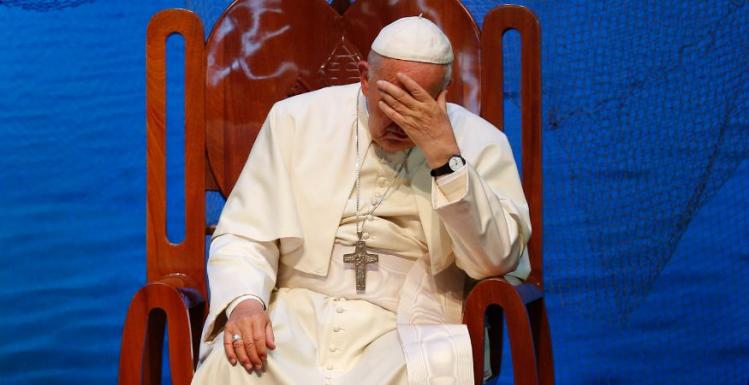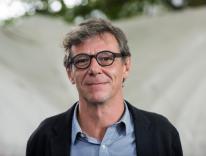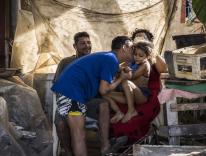
The art of translating from one language to another can be quite tricky.
If the numerous surveys done over the past couple of years are reliable, most churchgoing Catholics in the English-speaking world could bear witness to the fact that translations – especially those overseen by the Vatican – can also be quite bad at times.
A good translation should faithfully convey the meaning and sense of a word or phrase from the original language, but in a way that respects the integrity and beauty of the language into which it is translated. Unfortunately, fear of getting the first part of this equation wrong too often leads translators to commit the sin of transliteration.
When that happens, at least with too many Vatican texts, we end up with “spaghetti English.”
For example, Italians say, “Mi lavo i denti.” The literal translation is, “I wash my teeth.” But that’s not English. We brush our teeth. Of course, this is just a silly example of a typically silly-sounding, bad translation. Nonetheless, the meaning remains fairly clear.
But there are instances where the meaning is obscured or lost in translation, and this happens on too many occasions when translating the words of Pope Francis. Part of the challenge is that he is a native Spanish-speaker, but he communicates primarily in Italian.
Some things—even his trademark or stock phrases—can sound odd when rendered literally. One of them is the concept of “peripheries” or “people on the peripheries.” In English we say the margins, people on the margins or the marginalized.
Another problem is that the Vatican is notoriously slow in producing “official translations” of papal speeches, except for major events when the texts are prepared in advance. And sometimes these are not very good, either.
The prime example from the papal visit to Latin America last week was the English translation of the pope’s major speech to grassroots movements. He built part of the talk around the right for all people to have, what he called in Spanish, the “three Ts”—tierra, techo y trabajo (land, a roof [over one’s head], and a job).
That was changed in English to the “three Ls”—land, lodging, and labor. Lodging and labor? Migrant workers in tomato fields have that. Prison inmates do, too. But that’s not what Francis was talking about.
Various Vatican officials have expressed privately their frustration with such awkward and unsatisfactory translations. Said one, “Some of them make the pope sound stupid. And he’s anything but…”
****
Pope Francis is not the only revered church figure from Italy—and not even the holiest among them—who will be going to the United States a couple of months from now.
It was announced several days ago that Maria Goretti, known as the Little Saint of Great Mercy and the Patroness of Purity, will be arriving in the country on September 21, a day before Francis. And she’ll be staying a lot longer than him, going “on tour” for seven weeks to more than twenty-five dioceses in some seventeen states.
Just to refresh your memory, Maria Goretti died in 1902 in the seaside town of Nettuno about forty miles south of Rome. She was only eleven years old when a young man, a neighbor, stabbed her numerous times after she rebuffed his persistent sexual advances. Pope Pius XII canonized Maria in 1950 (her feast is July 6) and a huge pontifical basilica was built as a shrine to honor her. A fund-raising campaign is currently underway to refurbish it.
The main attraction at the church are the saint’s skeletal remains, which are contained within a wax statue of her body that is displayed in a glass-sided casket. (Actually, her right arm—the one she used to fend off her attacker—is in another Italian shrine.)
The person overseeing the St. Maria Goretti tour is Fr. Carlos Martins, a member of the Companions of the Cross, a society of priests founded in 1985 in Ottawa. Fr. Martins directs Treasures of the Church, an organization based in Toronto and Houston that conducts what it calls “ministry through relics.”
This outfit and the upcoming Goretti tour have the official backing of the Congregation for the Causes of Saints, as well as endorsements from Cardinals Edwin O’Brien, Grand Master of the Knights of the Holy Sepulchre, and Raymond Burke, Patron of the Knights of Malta.
Fr. Martins says there are always “healings” when he takes relics on tour. “Hundreds, perhaps even thousands, have been reported to me,” he claims. And some, he says, are quite “spectacular.” He offers these examples: “Attendees have reported that cancer, heart disease, tumors, osteoporosis, physical deformities, etc., disappeared immediately and completely.”
****
Speaking of the papal visit to the United States…. The US Conference of Catholic Bishops (USCCB) has released information for journalists who want to apply for accreditation to cover Pope Francis’s visit from September 22-27 when he goes to Washington, New York, and Philadelphia.
The application process looks arduous. “Wow—looks like you come from a police state!” said a left-leaning Italian colleague who has never been to America.
It might have been this line in the USCCB bulletin that provoked that reaction: “Media wishing to cover Pope Francis’ visit and/or the World Meeting of Families must apply to receive a Media Credential through a U.S. Secret Service/Ardian Group Inc. online application process.” It goes on to say, “The U.S. Secret Service accreditation process involves a thorough and lengthy review of all applications for accuracy and proper security screening.”
Yes, it sounds daunting, especially for those non-Americans who have had less-than-pleasant experiences trying to obtain travel visas to the United States or have had to face the sometimes strange-sounding questions of immigration officials at their point of entry.
But the application form itself (both in English and Spanish versions) is very simple and straightforward. Obtaining media credentials is probably going to be the least of our problems.
The real nightmare will be getting to the press center in the various cities and, even more than that, anywhere close to the papal events. “Because of security and transportation logistics, any one individual can consider being onsite for only ONE public event each day,” the USCCB advisory says.
And even that’s not the worst of it.
“Due to road closures, security barricades and lack of parking for many of the venues, credentialed media will be provided bus transportation to and from the media center hotels to cover the public events,” the notice continues. “This will be the only way for credentialed media to access assigned locations.”
My Italian colleague said he was a bit perplexed by this line: “Bus movements will be posted after ‘sweep times’ have been finalized by security entities.”
Mockingly, he said, “Jawohl, Herr Kommandant!”
Please email comments to [email protected] and join the conversation on our Facebook page.
Previous Story
The Decline of Catholic Marriages
Next Story
Key Changes

